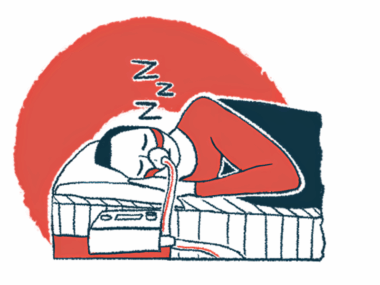High-intensity Rehab in Hospital Linked to Delayed Recovery in Study
Written by |

Contrary to increasing evidence, high-intensity inpatient rehabilitation was not found, in a Japanese study, to speed the recovery of people with myasthenia gravis (MG) who were intubated after a myasthenic crisis.
Instead, according to researchers, “high-intensity rehabilitation was associated with delayed recovery in the ADL [activities of daily living],” even after adjusting for other factors.
“The present study results suggest a negative influence of high intensity rehabilitation on recovery in the ADL after a crisis,” the team wrote.
The study, “Influence of inpatient rehabilitation after crisis in patients with myasthenia gravis: A retrospective cohort study using a nationwide administrative database in Japan,” was published in the Journal of the Neurological Sciences.
MG, an autoimmune disorder, is characterized by muscle weakness and fatigue due to damage at the neuromuscular junction — the region where nerve and muscle cells communicate. In early disease stages, a more restricted group of muscles is affected; later on, patients might start to show impairments in respiratory muscles.
According to the investigators, a growing body of evidence suggests that carefully designed rehabilitation programs can boost muscle strength and lessen fatigue in people with MG.
However, studies are lacking on the therapeutic potential of tailored rehabilitation for aiding patients who are recovering from MG crises, or exacerbations.
Now, the team — led by researchers at the Tokyo Medical and Dental University — conducted a retrospective analysis of data from MG patients who were hospitalized and had to undergo mechanical ventilation due to myasthenic crisis. The analysis included data gathered between April 2016 and March 2020.
Patients were divided into two groups according to the intensity of their rehabilitation program. In Japan, rehabilitation is measured in units. One unit means 20 minutes of rehabilitation, and patients may be given up to nine units — 180 minutes or three hours — per day. Rehabilitation intensity was categorized into two groups, high and low.
The study focused on the impact of rehabilitation on inpatient recovery — meaning the patients’ ability to perform activities of daily living, dubbed ADL. Such activities included rolling over in bed, going from the bed to a chair, being able to understand instructions on treatment and care, and engaging in dangerous behavior. Self-care such as feeding, dressing, and performing oral care also was assessed.
A score was given to each item with higher scores representing higher disability. ADL recovery was defined as an ADL score of zero.
Data were analyzed from 473 people with MG who were hospitalized after a myasthenic crisis. Their median age was 67 and 59.4% were women.
Patients were hospitalized for a median of 53 days (range 30–91 days). None had to undergo a thymectomy, which is surgery to remove the thymus, an organ that is part of the body’s immune system.
The median inpatient rehabilitation intensity was 1.3 units/day, lasting around 26 minutes per day. A total of 234 patients had high-intensity rehabilitation, while 239 underwent a low-intensity program.
Patients in the high-intensity group were generally older and more heavily treated with steroids. A higher proportion of patients in this group underwent a tracheotomy — a surgical procedure that creates an airway by making an opening in the windpipe.
When comparing both groups, researchers found that high-intensity rehabilitation was associated with delayed recovery in the ADL score, meaning that patients were disabled for a longer period of time.
While 45% of patients in the low-intensity group achieved an ADL score of zero — reflecting a total recovery — in four weeks, this was only seen in 36% of patients in the high-intensity rehabilitation.
Overall, these findings suggest that “high-intensity rehabilitation performed in current inpatient settings may not contribute to recovery in the ADL after a myasthenic crisis in patients with MG,” the researchers wrote.
“Despite this study’s large sample size, further research is necessary to reach firm conclusions,” they wrote.







Leave a comment
Fill in the required fields to post. Your email address will not be published.